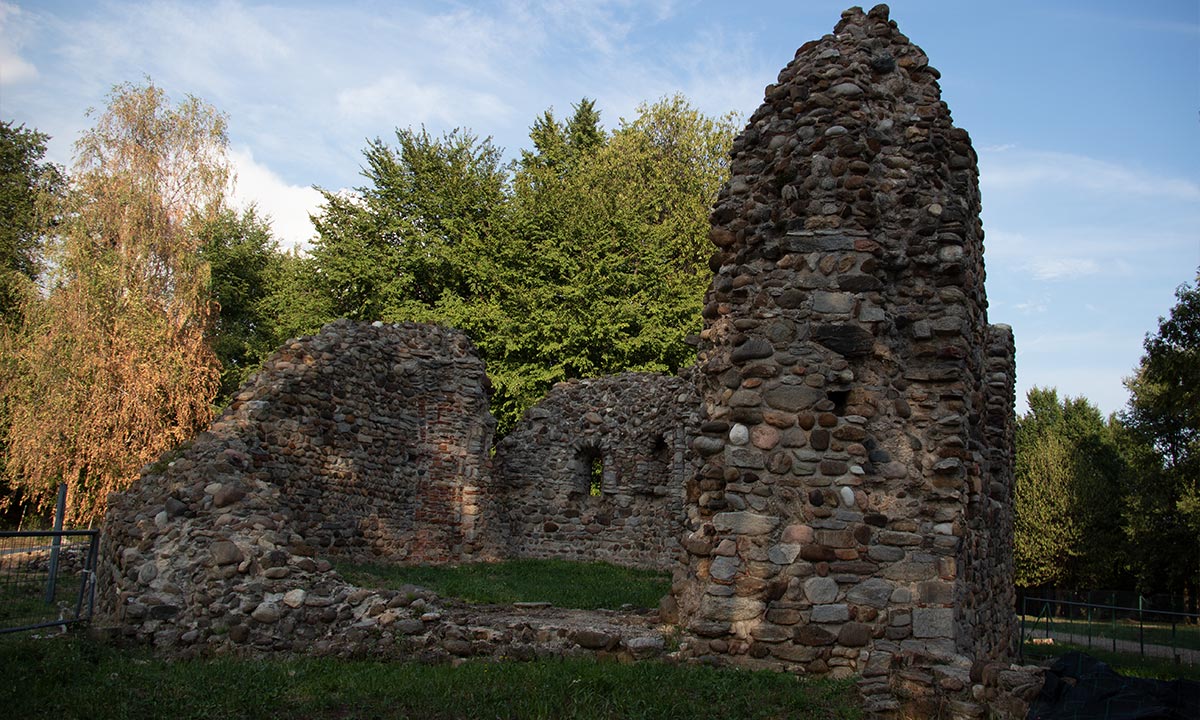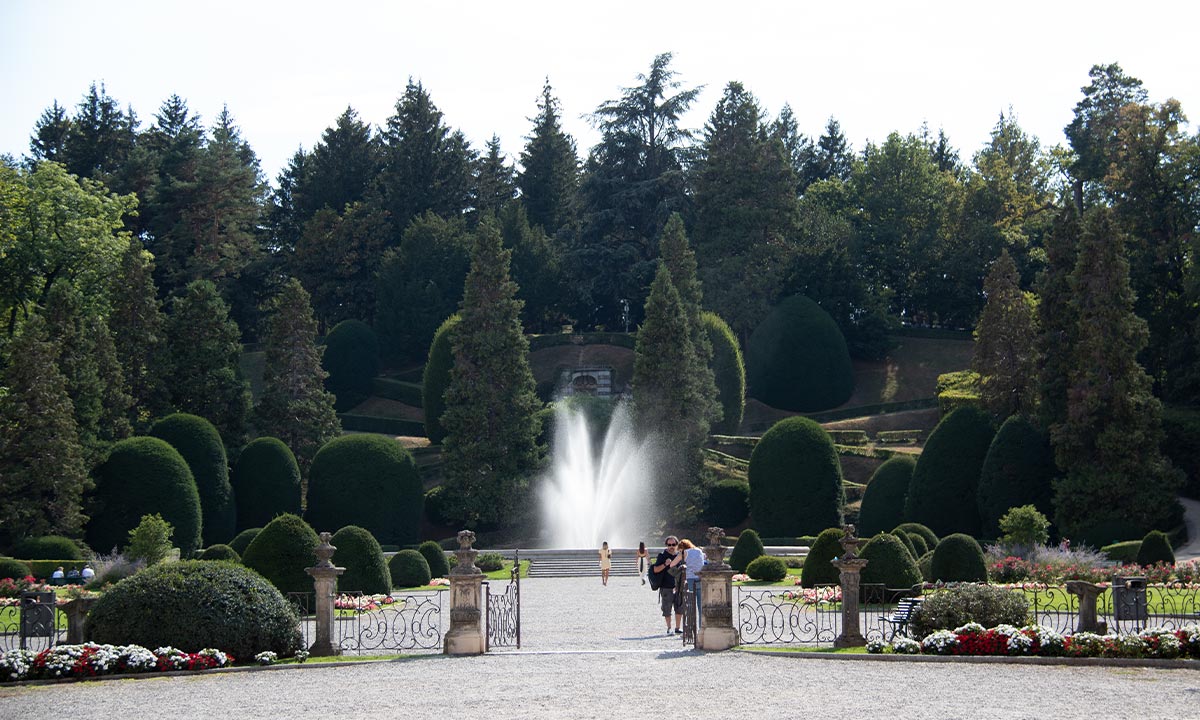Surroundings
Surroundings
What to Visit
Our recommendations on historical and naturalistic beauties to visit in the surroundings of Morazzone.
We would like to remind our guests that we offer the possibility of a certified naturalistic environmental guide with whom you can agree on your favorite itineraries.
Morazzone
n Morazzone the main church was built in 1814-1817 and dedicated to St. Ambrose. Documentation shows that around 1810 the parish priest Don Francesco Pesenti thought it was necessary to build a larger church and entrusted its design to the architect Simone Cantoni (Muggio – Canton Ticino, 1736-1818).
Inside are old walls of the earlier 16th-century church with a fresco depicting St. Ambrose, (16th century) attributed to Pier Francesco Mazzucchelli known as Il Morazzone, or of the school.
Two granite blocks and a serizzo tombstone are kept inside the church: the two blocks commemorate the birth, social status and death of the two brothers Marcus and Lucius Senzii, dating back to the first century A.D. Both brothers were legionaries of the 4th Scythian legion and belonged to the Roman Ufentine tribe.
The bell tower, erected between 1582 and 1646 and its construction took a full 64 years, due to lack of funds, having been commissioned by the faithful of Morazzone through their offerings.
In the town’s historic center stands Casa Macchi, a residence of cultural interest that preserves inside all the furnishings and furniture of a 19th-century family home, a dwelling that still leaves indelible traces “frozen in time” of the life lived by members of the Macchi family of Morazzone.
On Dec. 5, 2021, FAI, in collaboration with the Municipality of Morazzone, the Lombardy Region’s Department of Autonomy and Culture and the Cariplo Foundation, inaugurated the Emporio di Casa Macchi, a small store furnished with historic furniture and ornaments and inside which it is possible to find groceries and local products, all designed with a view to re-proposing the atmosphere of the typical stores of the small provincial boroughs active here until the early 20th century.
Varese lake
Varese Lake is situated at the foot of the Varese Pre-Alps at an altitude of 238 m above sea level; it has an average depth of 11 m and a maximum of 26 m, while the surface area is 14.95 km².
It is the 10th largest Italian lake, known for its unmistakable shoe shape.
Together with Lakes Maggiore, Comabbio, Lugano, Ganna, Ghirla and Monate, it is part of the so-called Seven Lakes of the province of Varese.
Lake Varese, a renowned competition field for rowing, is home to the Canottieri Varese, organizer of national and international rowing events, and, since 1960, also to the Canottieri Gavirate, which has reported numerous successes such as the Montù Cup in 2007 in 2008 and 2009.
Sacred Mountain of Varese
The Sacro Monte of Varese is located in the hamlet of Santa Maria del Monte, and consists of fourteen chapels, dedicated to the mysteries of the Rosary, leading to the shrine of Santa Maria del Monte, a place of pilgrimage since the Middle Ages, which serves as the fifteenth chapel. It belongs to the group of nine Sacred Mounts in Piedmont and Lombardy included in UNESCO’s World Heritage Sites in 2003. Because of the quality of the artists who participated in its realization, it constitutes an outstanding testimony to the artistic culture that developed in the Duchy of Milan. The sanctuary preserves a neoclassical organ from 1831 by Luigi Maroni Biroldi, restored by Pietro Talamona in 1871 and Vincenzo Mascioni in 1989. The hamlet of Santa Maria del Monte, where the sanctuary is located (elevation 844 m above sea level), is connected to the rest of the city not only by an urban automobile line (line C) but also by a funicular railway: built in the early 20th century as part of Varese’s tramway network, it was abandoned in the 1950s and then put back into operation in 2000. The summit of the mountain rises to a maximum elevation of 883 meters.
Seprio County
The archaeological area of Castelseprio is famous because in the 13th century Seprio was involved in the struggles between Visconti and Torriani for the control of Milan. In March 1287, on the night of March 28-29, some mercenaries from the Ossola Valley hired by Archbishop Ottone Visconti entered Castel Seprio, probably on the occasion of the Santa Maria Foris Portas fair, and tricked their way into it. The archbishop destroyed the fortress and the village, sparing the churches, and had the following sentence inserted in the statutes of Milan: “Castel Seprio be destroyed and remain destroyed in perpetuity so that no one dares or presumes to dwell on this mountain.”
With the end of its capital city, the contado was included in the Visconti territories of the Seignory of Milan, until 1339, when Lodrisio Visconti usurped the title of Lord of Seprio and, at the head of the Company of St. George, moved against Milan. Emerging defeated by Luchino Visconti’s Ambrosian troops on February 21 at Parabiago, he was imprisoned in the castle of San Colombano. The title passed to the lords from Milan Luchino and Giovanni Visconti.
Torba Abbey
The first nucleus of the complex (known as castrum) arose by the Romans in the 4th-5th centuries AD as one of the military outposts built for defensive purposes against the barbarians along the northwestern belt of the Alps.
The castrum was also used in later centuries by the Goths, Byzantines and Lombards. It was during the long period of the pax longobarda that the Torba complex, losing its military purpose, acquired a civil and, later, religious function, thanks to the settlement in the 8th century of a group of Benedictine nuns.
After years of neglect and abandonment, the complex was purchased in 1977 by Giulia Maria Mozzoni Crespi, who donated it to the “Fondo Ambiente Italiano” (Italian Environmental Fund), which has since restored it.
Este Palace
The Palazzo Estense in Varese was a residence of Francesco III d’Este, Duke of Modena and Reggio, administrator, captain general and later governor of Austrian Lombardy. On September 20, 1755, the duke first came to Varese with his retinue, as a guest of Marquis Menafoglio.
In the park, modeled in the likeness of that of the imperial palace of Schönbrunn, the characters of the Romantic garden are blended with those of the French garden, rich in parterres. The central protagonist is a nymphaeum, set on a rise, consisting of three niches lined with tuff concretions and statues. To satisfy the Duke’s passion for hunting, part of the park was adapted as a hunting post with oaks, elms and chestnut trees.
Toeplitz Villa
A country residence of the German Hannesen family, it was purchased by Polish-born banker Jósef Leopold Toeplitz in 1914. In the following years many additions were made to the present buildings and to the estate park. The upper part of the complex is reminiscent of French gardens, and was in fact designed by a Parisian firm; it channels water from nearby Mount Martica.
























